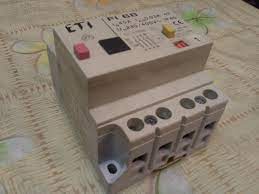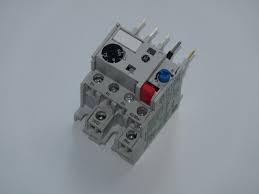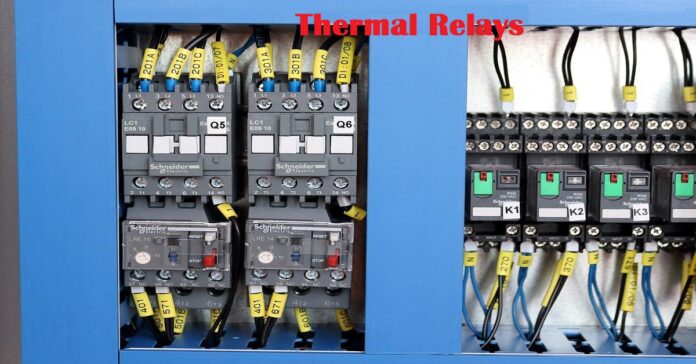What is a Thermal Relay:
You might have seen electronic boxes used in the electronics industry or sold in the markets having different knobs, buttons, and adjusters attached to them and some terminals on the top. Excited to know what they are? These are called Thermal Relays.
A thermal relay electrical appliance which is used within an electrical circuit to protect it from overloading and overheating. Thermal relays are designed to open the circuit if the current flowing through it exceeds a certain threshold. Because of electrical current flowing through the circuit, an excessive heat is generated, so the relay protects the circuit as it stops creating extra heat from building up. Thermal relays are commonly used in motor control applications, such as contactors and starters. These relays are also used in transformers and generators.
Thermal relays are commonly used in circuits that carry heavy loads, such as motor control circuits. They work in a way that they open the circuit, when the current flowing through surpasses a threshold level.
So this article will cover all the valuable information to understand thermal relays, like their applications, working principles, and different types, so keep reading this article.

Types of Thermal Relays:
There are two main types of thermal relays: bimetallic and electronic.
Bimetallic:
Bimetallic thermal relays use a bimetallic strip heated by the current flowing through the protected circuit. When the bimetallic strip reaches the predetermined set point, it deflects and breaks the circuit, protecting the equipment from damage.
Electronic:
Electronic thermal relays use a semiconductor component that senses the temperature of the protected circuit. When the temperature of the protected circuit reaches the predetermined set point, the semiconductor opens and breaks the circuit, protecting the equipment from damage.
How Thermal Relays Work:
Components of thermal relay:
Thermal relays typically have two major components: a bimetallic strip and a heat-sensitive element. The bimetallic strip is used to convert change in temperature into mechanical change, it is made of two different metals having different expansion rates. When the strip is heated, the metal with a higher expansion rate expands more than the other metal, causing the strip to bend. This movement is used to either open or close a switch within the relay.
The heat-sensitive element is typically a bulb filled with a liquid or gas that expands when heated. This expansion causes a switch to either open or close, depending on the design of the relay.
Working Principle:
When a thermal relay is placed in an electrical circuit, it monitors the current flowing through it. If the current exceeds a certain threshold, the relay will activate and cause the circuit to open or close. This can help prevent damage to equipment by preventing excessive currents from flowing through it.
Thermal relays are devices that use the principle of heat expansion to open or close an electrical circuit. They are often used in applications where it is necessary to protect equipment from overheating, such as in power supplies, motors, and transformers. They are used in combination with different safety devices in electrical circuits like fuse or circuit breakers.
Read More: What Is An Electricity Control Panel? All About Electricity Control Panels

Construction of Thermal Relays:
Thermal relays are constructed using bimetallic strips. These strips are made of two different metals with different expansion coefficients. When the strip is heated, one metal expands more than the other, causing the strip to bend. This bending causes a switch to close or open, depending on the design of the relay. During heating of the strip, the metal with a higher expansion coefficient expands more than the other metal, causing the strip to bend. This kind of movement of the strips by heating can be used to open or close an electrical circuit.
Thermal relays are designed and sold in the market in different sizes and shapes. Disk type is one of the common types and is used in motors and other electrical equipment. The disk has a small hole in the centre that allows electricity to flow through when the disk is heated.
Thermal relays are also available in rod and tube types. Rod and tube design is used in air conditioners and in other low-spaced applications.
Rod and tube thermal relays have a higher sensitivity than disk-type relays. They are also more expensive.
Thermal relays are constructed from various materials like copper, brass, bronze, and stainless steel. The choice of material depends on the application and the environment we will use it.
Applications of Thermal Relays in Industries:
- Thermal relays are used in various industries and applications, including HVAC systems, oil and gas pipelines, and solar power plants. Thermal relays can control the temperature of a process or machine or protect equipment from overheating.
- They are also used in the oil and gas industry to control the flow of natural gas and oil in pipelines. In the solar power industry, they are used to regulate the temperature of solar panels. In the HVAC industry, thermal relays are used to control the temperature of air conditioning units.
- One of the shapes of thermal relays. Can be round or rectangular mounted on a panel or a DIN rail.
- Apart from their use in the oil & gas industry, they are also used in the automotive industry, aerospace industry, the food and beverage industry, and in consumer electronics like microwaves and coffee makers. Thermal relays are also used in temperature control, overheat protection, and energy management systems.
- Thermal relays are essential for any industrial or electronic application where temperature control is essential. They are reliable and easy to use, and they can help prevent damage to equipment by shutting off power when temperatures get too high. A thermal relay is an excellent solution if you need temperature control in your application.
Final Words:
Thermal relays are an essential part of any electrical or industrial system. They can save you a lot of money in the long run by preventing expensive equipment from being damaged. If you have any questions about thermal relays or how they work, always get help from your local electrician. He will also help you choose the right type of thermal relays depending on the system you are using. If you enjoyed reading this article, please subscribe our blog post to read more interesting articles in technology, home improvement, gaming, Lifestyle and other niches.










